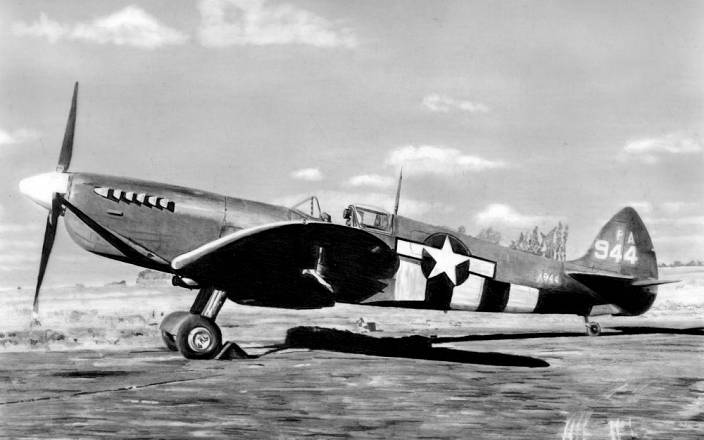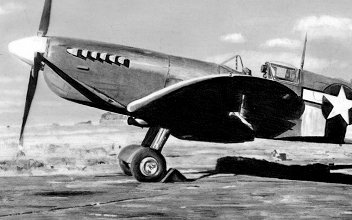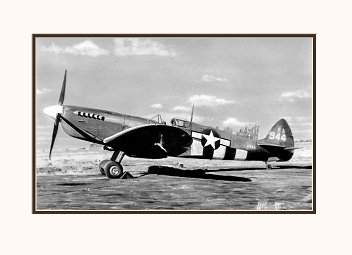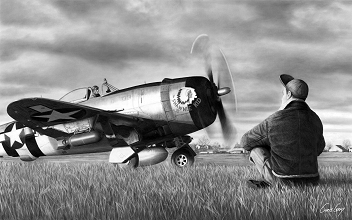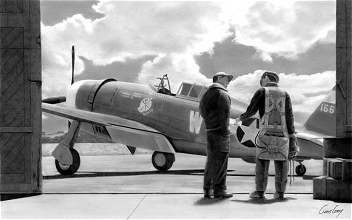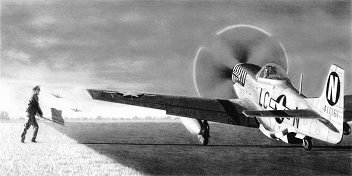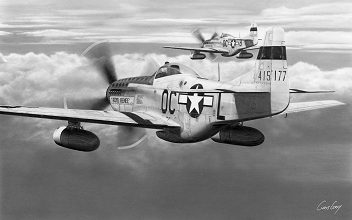|
|
|||
| Capt. John Blyth | Spitfire PR Mk XI | PA 944 |
Original Sold ●
|
| 8th Air Force | 7th Photo Recon Group | 14th Photo Squadron |
No Print Edition
|
| Station 234 | RAF Mount Farm | August 1944 |
| Artwork Dimensions: | Medium: | Picture Code: | Share: |
| 32cm x 20cm (12.6" x 7.9") | Graphite on Drafting Film | AV018-SPITXI-7PRG |
|
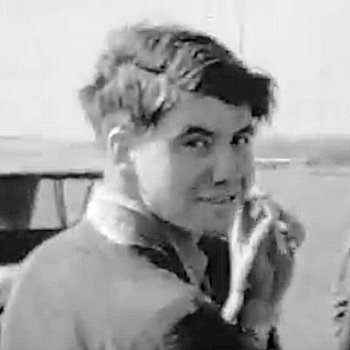
This particular aircraft was assigned to the 14th Photo Squadron of the 7th Photo Reconnaissance Group on 20th April 1944, operating from RAF Mount Farm, near Oxford, England. Like most of the unit's aircraft, it would have been used by several different pilots, but one known to have flown sorties in it was Capt. John Blyth who served with the unit from 1943 through until the end of the war. After completing his training Stateside, he ended up at Petersen Field, Colorado Springs before shipping out to the ETO where he was to initially fly the Lockheed F-5 Lightning with the 22nd Photo Squadron. He then transferred within the Group to fulfil his ambition to fly Spitfires with the 14th Squadron from April 1944.
On September 12th 1944, Blyth, having now reached the rank of Captain, got into some trouble while on a reconnaissance mission behind the Ruhr during which his headset cord got caught in the CO2 manual system for the landing gear resulting in the wheels getting locked in the up position. When he arrived back at Mount Farm he circuited the airfield until his fuel ran low trying every way he could think of to get the lock to disengage and the undercarriage to drop, but all to no avail and so he was forced to bring his Spitfire in for a belly landing on the grass. Luckily he escaped the ordeal unharmed and went on to increase his total sorties in the Spitfire to thirty six, achieving the rank of Lieutenant Colonel and earning a DFC in the process.
In 2005, William Lorton, who's Great Uncle Jim Savage had been the Flight Surgeon assigned to the 7th PRG, went through footage filmed by his relative of the Group's operations during the war. Amongst the cine film was a clip of John Blyth making the belly landing in Spitfire PA 944 and William set about trying to trace him so he could show him the film. In doing so, he created his own excellent short film about this story which can be found on Youtube - Sundance Films: Spitfire 944
This drawing is based on an original photograph which can be found here on the IWM American Air Museum in Britain website.

